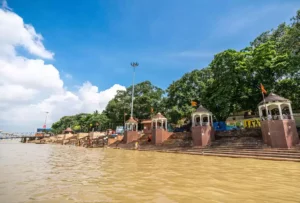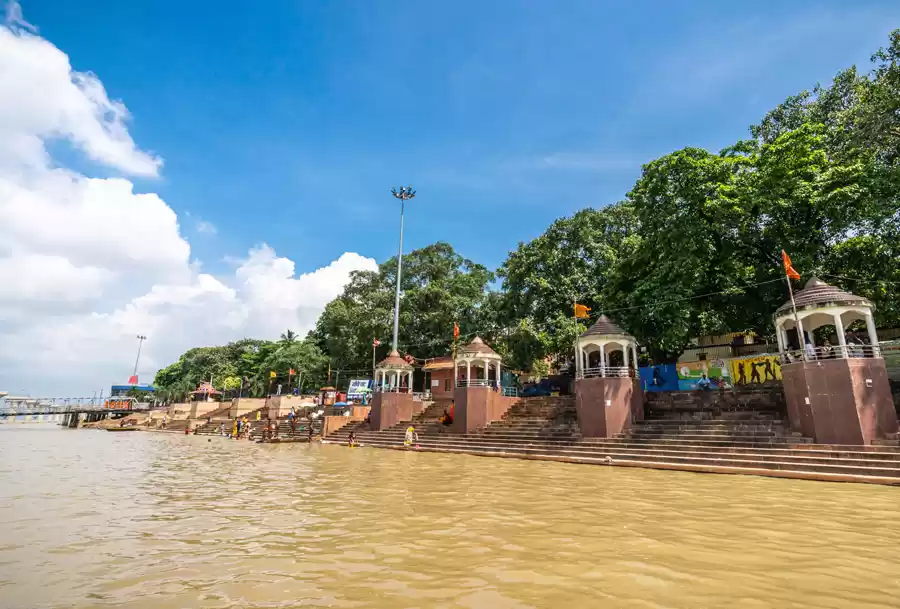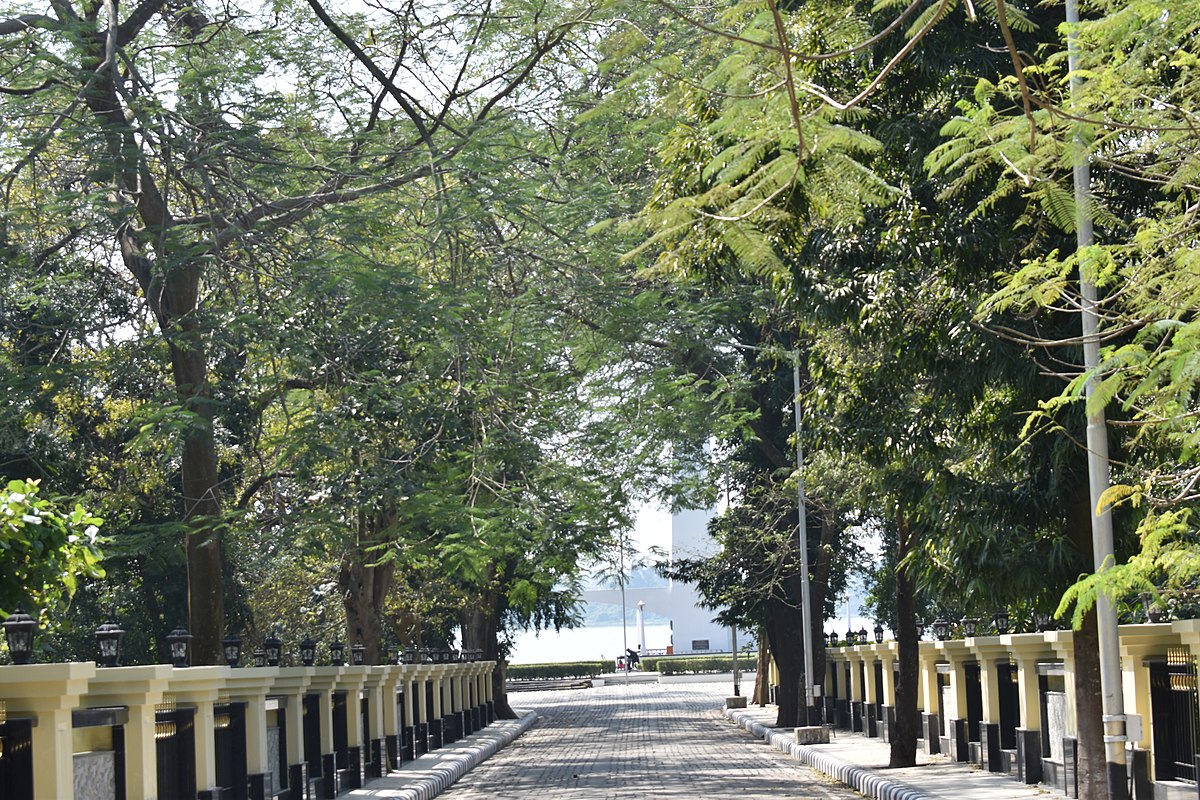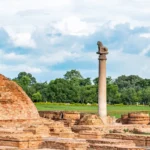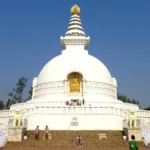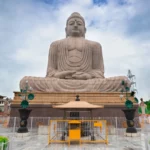India, the land of rich history and diverse culture, is home to numerous historical monuments and memorials that bear witness to the nation’s struggle for independence. Among these iconic landmarks is Gandhi Ghat, one of the must visit tourist places in Patna of immense historical significance that pays tribute to the Father of the Nation, Mahatma Gandhi. Situated on the banks of the holy river Ganges, Gandhi Ghat stands tall as a memorial to a national hero and a symbol of India’s freedom struggle.
- The Life and Legacy of Mahatma Gandhi
- A Memorial to a National Hero
- Situated on the Banks of the River Ganges
- The Architecture and Design of Gandhi Ghat
- Features and Attractions
- Religious Practices and Rituals
- Festivals and Celebrations
- Boat Rides and Ganges Aarti
- Challenges in Maintaining the Ghat
- Conservation Initiatives
- A Symbol of India's Freedom Struggle
- Pilgrimage Destination and Tourist Attraction
- Impact on the Local Economy
- Exploring Gandhi Ghat and Beyond in Patna
- Conclusion
- Frequently Asked Questions
- Photo Gallery
The Life and Legacy of Mahatma Gandhi
Mahatma Gandhi, also known as the “Mahatma” or “Great Soul,” was a preeminent leader of India’s independence movement against British rule. His philosophy of non-violence and civil disobedience, also known as Satyagraha, inspired millions to participate in the struggle for freedom. Gandhi’s principles and actions not only led India to independence but also influenced civil rights movements worldwide.
A Memorial to a National Hero
Gandhi Ghat was built to honor the memory of Mahatma Gandhi after his assassination on January 30, 1948. The ghat, which is a series of steps leading to the river, serves as a place for devotees and visitors to pay their respects to the Mahatma. It has become an essential pilgrimage destination for people seeking to connect with Gandhi’s ideals and teachings.
Situated on the Banks of the River Ganges
Gandhi Ghat is strategically located on the banks of the River Ganges in Patna, Bihar. The site holds spiritual significance as the Ganges is considered a sacred river in Hindu mythology and is believed to cleanse one’s sins. This adds a religious touch to the memorial, attracting both devotees and tourists from all over the country.
The Architecture and Design of Gandhi Ghat
The architecture of Gandhi Ghat reflects a blend of modern design and traditional aesthetics. The steps leading down to the river are built with white marble and adorned with intricate carvings depicting scenes from Gandhi’s life and India’s struggle for independence. The design offers a serene and contemplative ambiance, ideal for introspection and prayer.
Features and Attractions
Apart from the memorial platform, Gandhi Ghat offers several attractions for visitors. One of the main highlights is the spectacular view of the Ganges during sunrise and sunset. Tourists and locals alike flock to the ghat to witness the mesmerizing Ganges Aarti, a ritual involving fire lamps and devotional songs dedicated to the river.
Religious Practices and Rituals
Gandhi Ghat is not just a tourist attraction; it is also an active religious site. Devotees visit the ghat to perform various religious rituals, including offering flowers, lighting incense, and taking holy dips in the river. The serene environment encourages spiritual practices and introspection.
Festivals and Celebrations
The ghat becomes a hub of activity during significant festivals, especially on Gandhi Jayanti (October 2nd), the birthday of Mahatma Gandhi. On this day, people from all walks of life come together to pay tribute to the Mahatma, offering prayers and floral tributes at the memorial.
Boat Rides and Ganges Aarti
Tourists visiting Gandhi Ghat can also enjoy boat rides on the Ganges, offering a unique perspective of the memorial and its surroundings. Additionally, witnessing the Ganges Aarti from a boat provides an ethereal experience that leaves a lasting impression on visitors.
Challenges in Maintaining the Ghat
Preserving historical monuments is not without its challenges. The Ghat, too, faces the test of time, weather, and human impact. Erosion caused by the flowing river and pollution pose threats to the structure’s integrity, necessitating constant maintenance and restoration efforts.
Conservation Initiatives
To protect and preserve the Ghat, various government and non-government organizations have taken up conservation initiatives. Regular cleaning drives, awareness programs, and strict regulations against pollution have been implemented to maintain the ghat’s sanctity.
A Symbol of India’s Freedom Struggle
Gandhi Ghat stands as a poignant reminder of India’s struggle for independence and the values of truth and non-violence that Gandhi espoused. It continues to inspire generations, reminding them of the sacrifices made by the nation’s leaders to secure a free and sovereign India.
Pilgrimage Destination and Tourist Attraction
Today, Gandhi Ghat attracts not only pilgrims seeking spiritual solace but also tourists keen on understanding India’s history and heritage. Its historical significance and architectural charm make it an essential stop for history enthusiasts and curious travelers alike.
Impact on the Local Economy
The presence of a significant tourist attraction like Gandhi Ghat has a positive impact on the local economy. It generates employment opportunities for local vendors, guides, and artisans, thereby contributing to the economic growth of the region.
Exploring Gandhi Ghat and Beyond in Patna
Gandhi Ghat in Patna is more than just a serene riverside spot; it’s a reflection of history and a testament to the legacy of Mahatma Gandhi. As you immerse yourself in the tranquil atmosphere of this ghat, you’ll find echoes of India’s freedom struggle resonating through the gentle waves of the Ganges. And while you’re in the vicinity of Gandhi Ghat, why not extend your exploration to some of the nearby landmarks? The Patna Museum, just a short distance away, is a treasure trove of artifacts that chronicle the state’s rich history. A leisurely stroll from the ghat takes you to the iconic Golghar, a granary from the British era that offers panoramic views of the city. For those interested in religious heritage, the Mahavir Mandir and the Patan Devi Temple are sanctuaries of devotion and architectural marvels. By including these nearby attractions, you can create a comprehensive guide to exploring not only Gandhi Ghat but also the gems that lie in its proximity.
Conclusion
Gandhi Ghat in Patna stands tall as a testament to India’s struggle for freedom and the indelible legacy of Mahatma Gandhi. As a memorial to a national hero, it attracts pilgrims, history enthusiasts, and tourists from all corners of the country. The serene ambiance and spiritual significance make it a place of solace and introspection. Gandhi Ghat continues to inspire generations, reminding them of the values of truth, non-violence, and freedom.
Frequently Asked Questions
Yes, It is open to the public every day, and visitors can access it during specific hours.
Yes, visitors are allowed to take photographs, but it is essential to be respectful of the surroundings and other visitors.
No, there is no entry fee to visit the Ghat. It is open for all to experience and pay their respects.
The best time to visit Gandhi Ghat is during sunrise and sunset when the view of the Ganges is breathtaking.
Yes, some nearby attractions include Patna Museum, Golghar, and Nalanda University Ruins, which are worth exploring.
Photo Gallery
